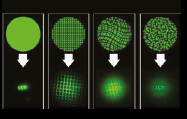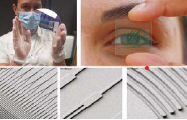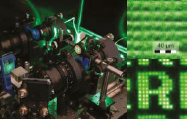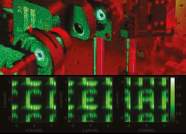Retinal Projection
An innovative, integrated solution based on holographic pixels for augmented reality applications
Augmented Reality (AR) glasses face critical challenges in terms of optics, computational science and social development. This technology could lead to a post-smartphone revolution built around hands-free interactions. However, the development of AR hardware devices and applications has yet to advance sufficiently for AR glasses to become our daily companions. CEA-Leti is investigating a non-conventional approach in order to overcome the limitations of standard AR glasses.
CEA-Leti researchers are exploring how to create transparent, smart glasses that look like normal ophthalmic lenses, but could transmit information directly onto a user’s retina. To do so, Leti is building on its expertise in several areas of micro & nanotechnology:

|
Self focusing effect
As the basis of the novel CEA-Leti AR glasses concept, this effect ties into a variety of diffraction and refraction phenomena. A well-defined distribution of emission points (EPD) is necessary to achieve good resolution and contrast on the retina. The greater the randomization, the better the resolution.
|

|
Visible range, dense waveguide network
EPDs are formed by activating electrodes that commute liquid crystal switches. This lets out light from waveguides designed in the visible range. A high density, random-like distribution of waveguides is required in order to achieve the best resolution.
|

|
Microhologram recording and material formulation
Each EPD is oriented in the right direction thanks to holographic microelements (hoel). A precise holographic printer creates interferences in the hologram material at microscopic scales. The resulting 10μm size hoels are coded in angle to generate elementary spots (spel) that form the expected image on the retina. The holographic printer is implemented using commercial photomaterial. CEA-Leti also developed a specific in-house photopolymer.
|

|
Pixelated hologram activation
In the final version of the system, the angularly encoded holograms are read
through a fully integrated component by means of liquid crystal switches
placed between the waveguides and the holograms. This integrated
configuration is currently under evaluation. It is completed by a free space
configuration with an optical bench made of discrete components including
a Spatial Light Modulator (SLM).
|